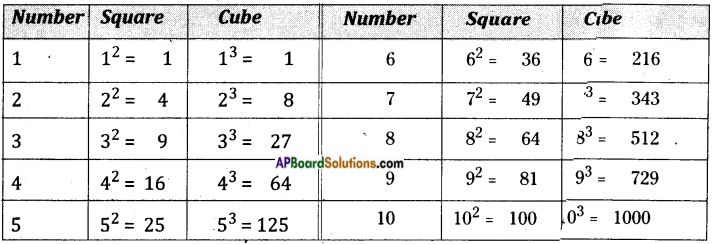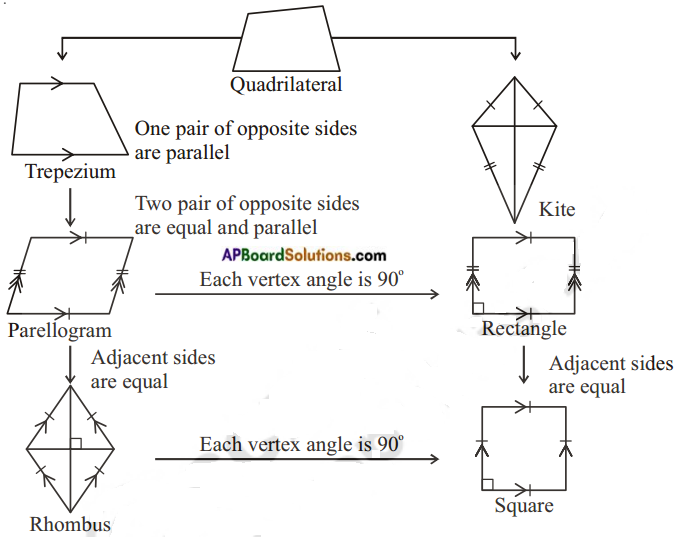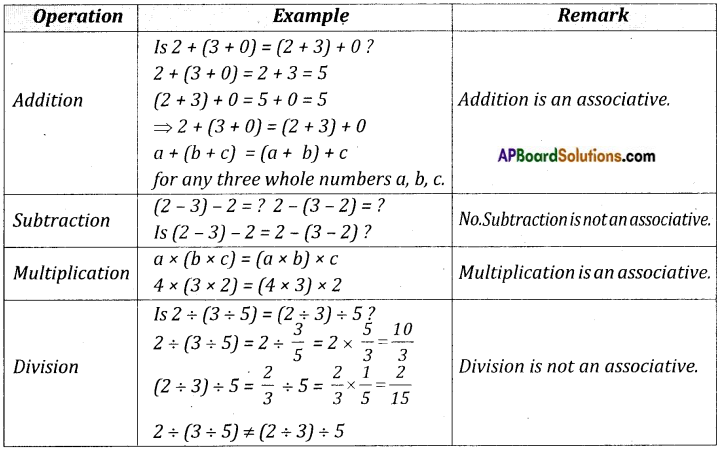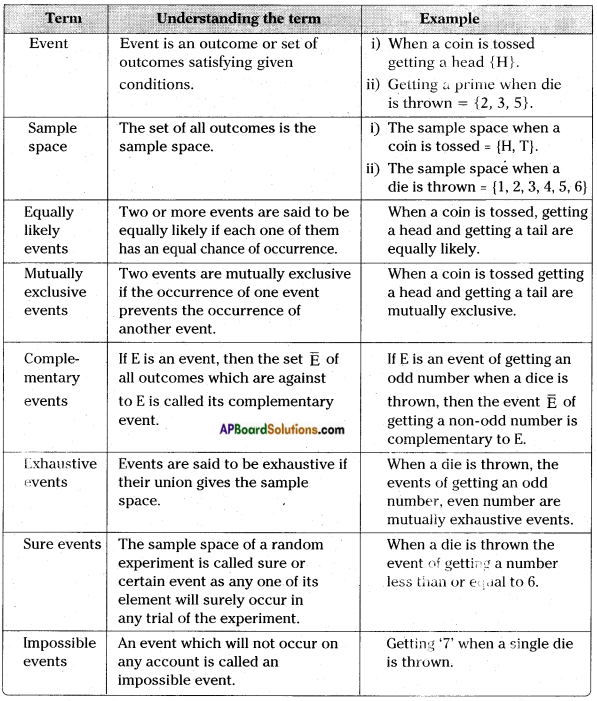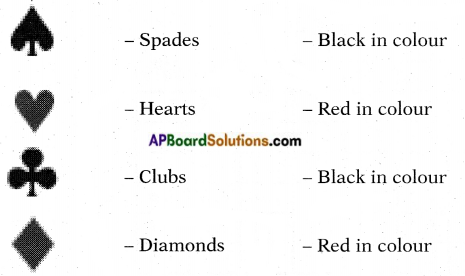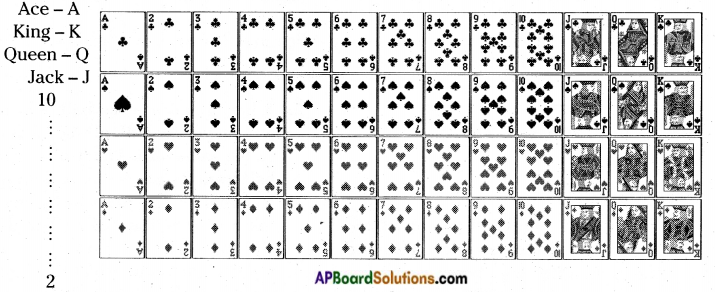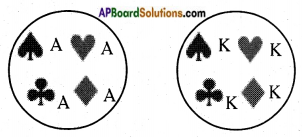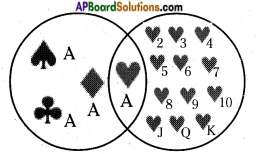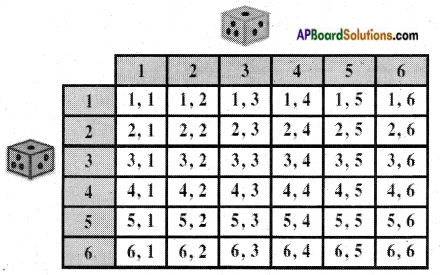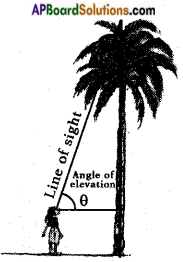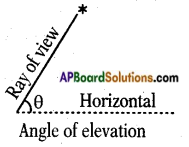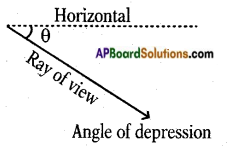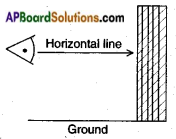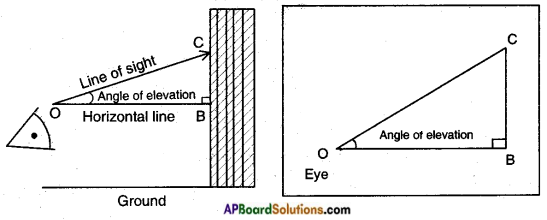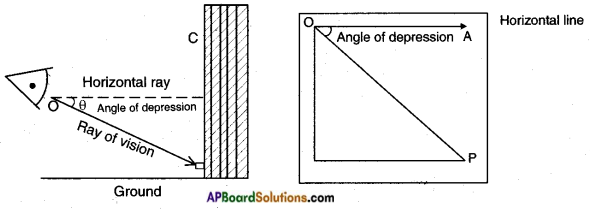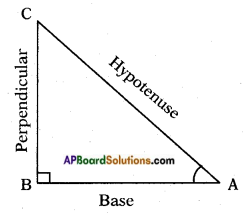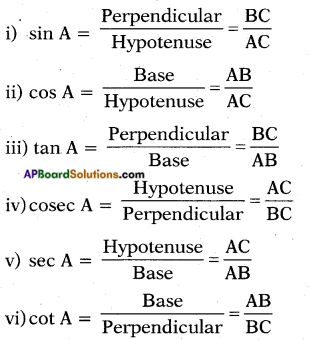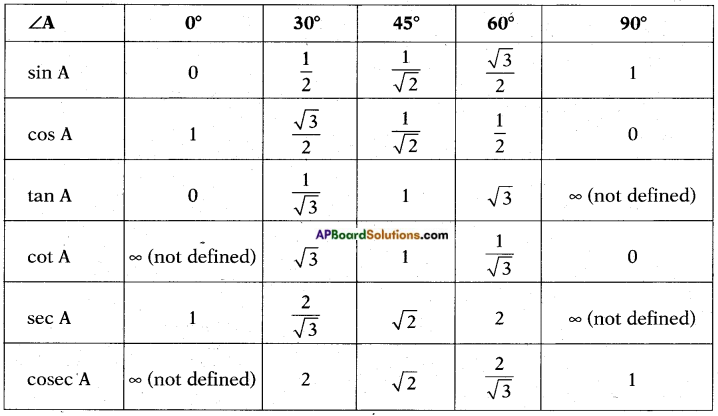Students can go through AP Board 8th Class Maths Notes Chapter 9 Area of Plane Figures to understand and remember the concepts easily.
AP State Board Syllabus 8th Class Maths Notes Chapter 9 Area of Plane Figures
→ Area of a triangle = [latex]\frac{1}{2}[/latex] × base × height = [latex]\frac{1}{2}[/latex] bh
→ Area of a quadrilateral = [latex]\frac{1}{2}[/latex] × length of a diagonal × Sum of the lengths of the perpendiculars drawn from the remaining two vertices on the diagonal
= [latex]\frac{1}{2}[/latex] d(h1 + h2)
![]()
→ Area of a trapezium = [latex]\frac{1}{2}[/latex] × sum of the lengths of parallel sides × distance between them
= [latex]\frac{1}{2}[/latex] h(a + b)
→ Area of a rhombus = Half of the product of diagonals = [latex]\frac{1}{2}[/latex] d1d2
→ Angle at the centre of a circle = 360°
→ Area of a circle = πr2
Where ‘r’ is the radius of the circle, π = [latex]\frac{22}{7}[/latex] or 3.14 nearly
→ Circumference of a circle = 2πr
![]()
→ Area of a circular path (or) Area of a Ring = π(R2 – r2) or π(R + r) (R- r)
When R, r are radii of outer circle and inner circle respectively.
→ Width of the path w = R – r
→ Area of a sector A = [latex]\frac{x^{\circ}}{360^{\circ}}[/latex] × πr2 where x° is the angle subtended by the arc of the sector at the center of the circle and r is radius of the circle. (OR) A = [latex]\frac{lr}{2}[/latex] where Tis thdength of the arc.
Length of the arc of a sector = [latex]\frac{x^{\circ}}{360^{\circ}}[/latex] × 2πr

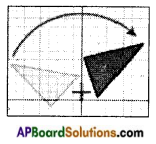
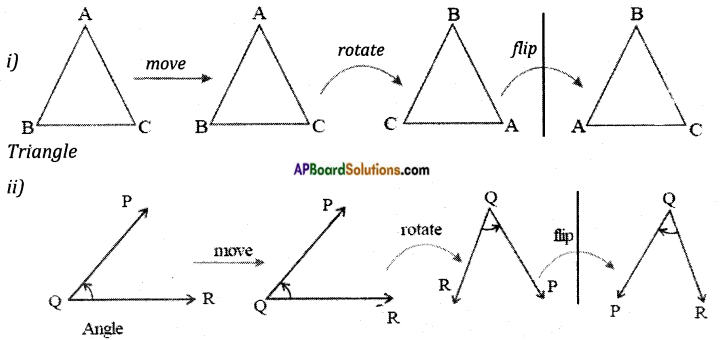
 (short representation) where ∑xi represents the sum of all xis, where ‘i’ takes the values from 1 to n.
(short representation) where ∑xi represents the sum of all xis, where ‘i’ takes the values from 1 to n.

